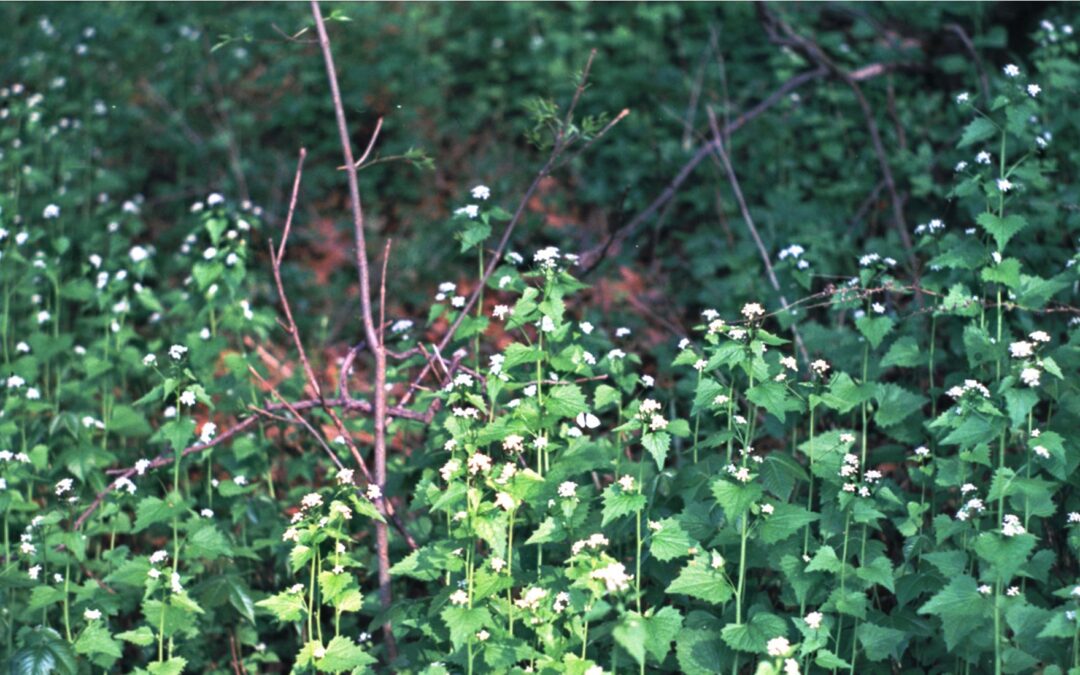By Pat Reber
More than 30 neighbors turned out to take on a growing threat to our wooded areas on spring enhancement day. The invasive threat is called garlic mustard, a plant introduced to North America in the mid 1800s for its herbal uses and erosion control, according to the Nature Conservancy. (See photo above, courtesy of the Nature Conservancy.)
The invader emerges earlier in the spring than many native plants and saplings, and with its tall growth, blocks sunlight to them while it competes for moisture and nutrients. It can also release chemicals into the ground that can interfere with other plants, including trees. The trend has increased with the warming climate. If you see it, please pull it up by its roots as soon as possible before its seeds set and put it into the garbage, NOT COMPOST.
Over the past several years, the volunteer Landscape Committee has organized campaigns to uproot the plants from the forests, but the invader manages to return. This spring’s campaign focused on a different tactic to see if large plantings of native flora can out-compete the invader.
Saven Wilkins, chair of the Landscape Committee, and Jonathan Ferguson spearheaded the purchase of about 100 native plants from local nurseries, supported financially by the HOA board. Some of the plants had already reached good heights of eight to 10 inches, giving them some muscle to block the invader.
The native plants put into the soil by volunteers include the following: Golden Ragwort, American alumroot, Virginia mountain mint, sensitive ostrich fern, Virginia bluebell and Hairy alumroot. You will see the new plants growing in our wooded areas and other communal areas. It is hoped at least some of them survive the deer.
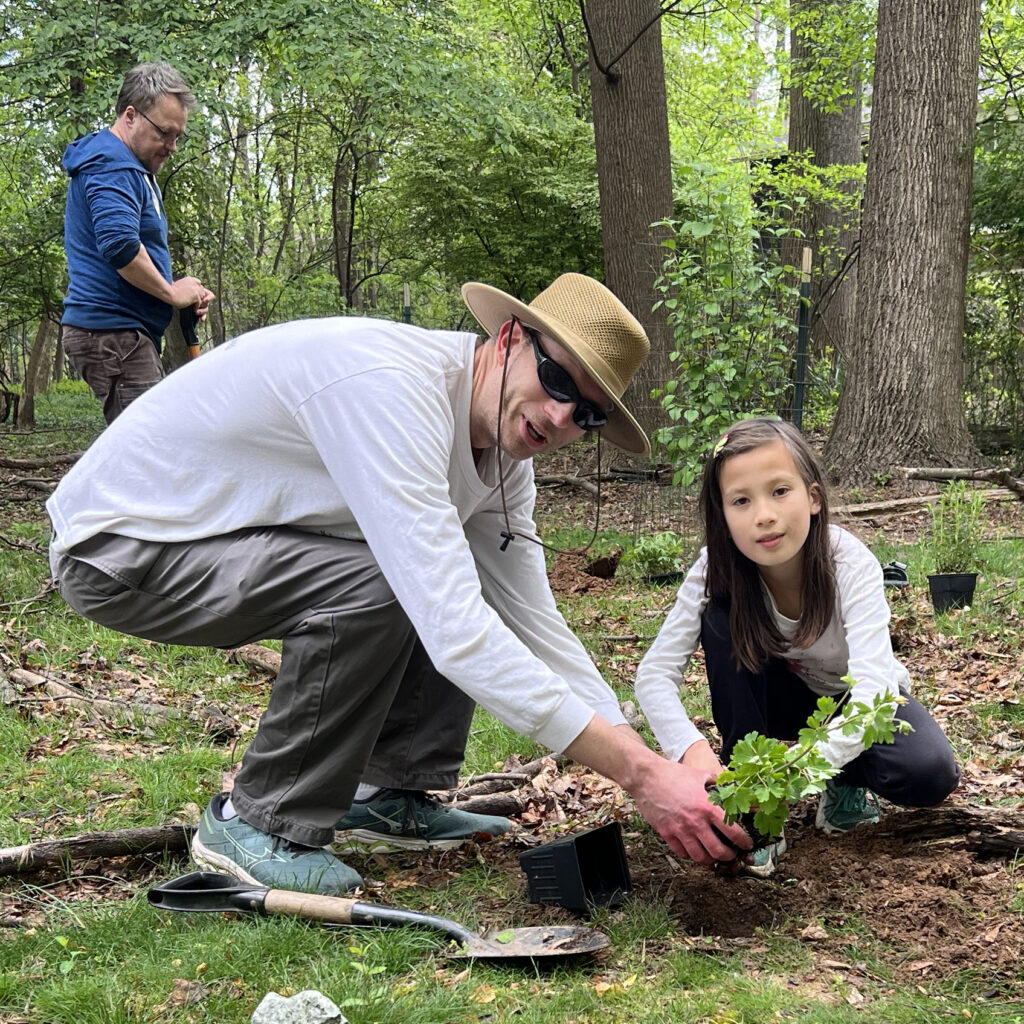
Jonathan and Ellery (9) Ferguson
Participants on April 20 included at least four children, and parents guided them.
Ellery Ferguson, age 9, has become an old hand with her plant knowledge, and on April 20 was able to shout out over her shoulder the names of the various flora being planted near her as she knelt with her dad Jonathan to work wild Columbine into the soil.
Gavin Hershey, age 3, got instruction from his dad Chris in digging holes with a child-size shovel for the Virginia mountain mint. During fall enhancement day, at age two and a half, Gavin held a tiny saw as his dad guided his hand cutting back a bush! Here was the scene this spring:
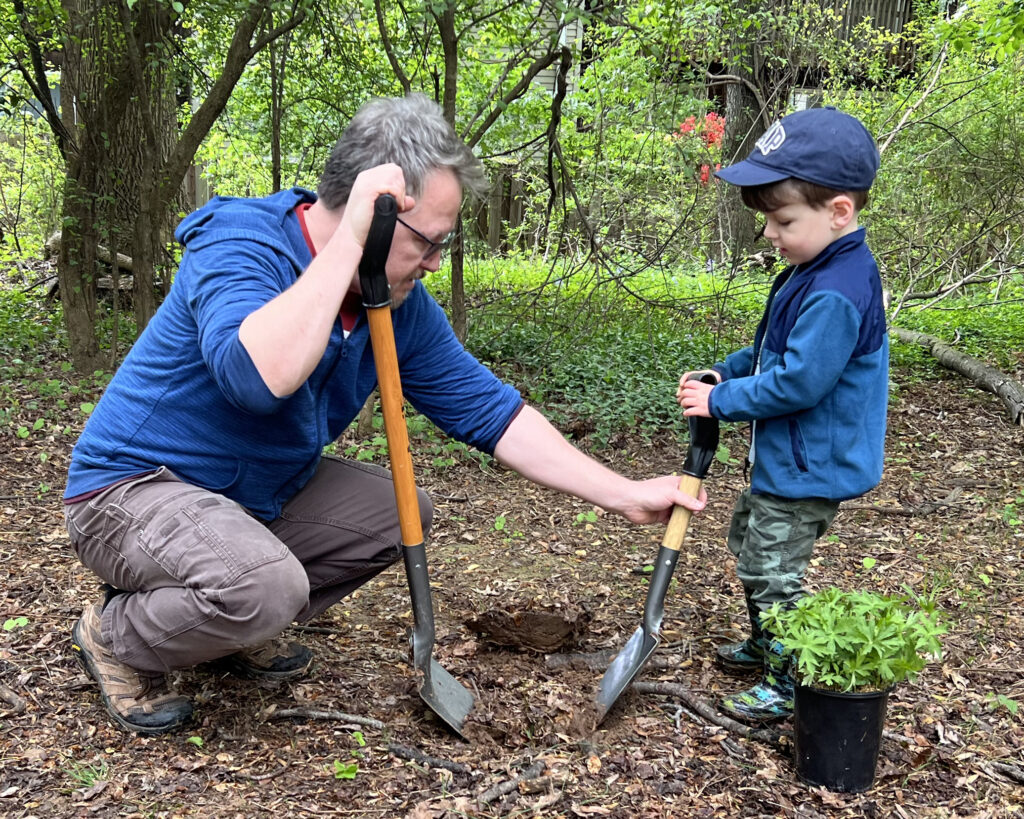
Chris and Gavin (3) Hershey
Noah Silverstein, age 8, and his dad Josh dug deep to get Hairy alumroots planted. Josh and Noah turned up last fall for enhancement day just two days after they had moved into New Mark Commons!

Noah (8) and Josh Silverstein
Lia Kalantary, three and a half, was on hand with her dad, Cou, to plant Golden ragwort!
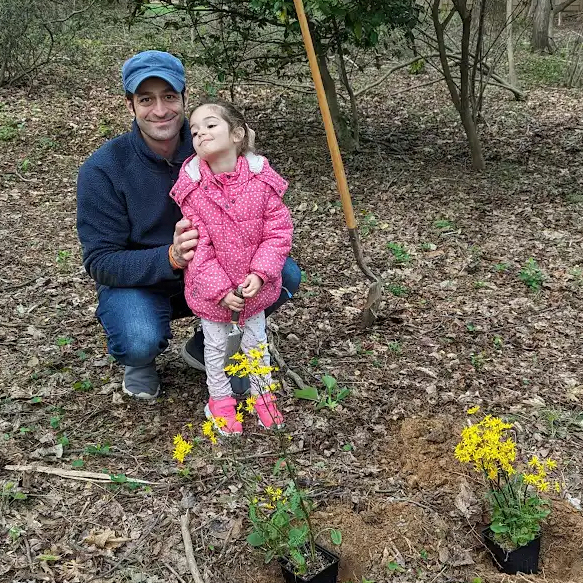
Cou and Lia (3.5) Kalantary
And Tomas Crumley, age 12, helped trim back the bushes on the entry island to New Mark Commons that is home to our NMC Totem.
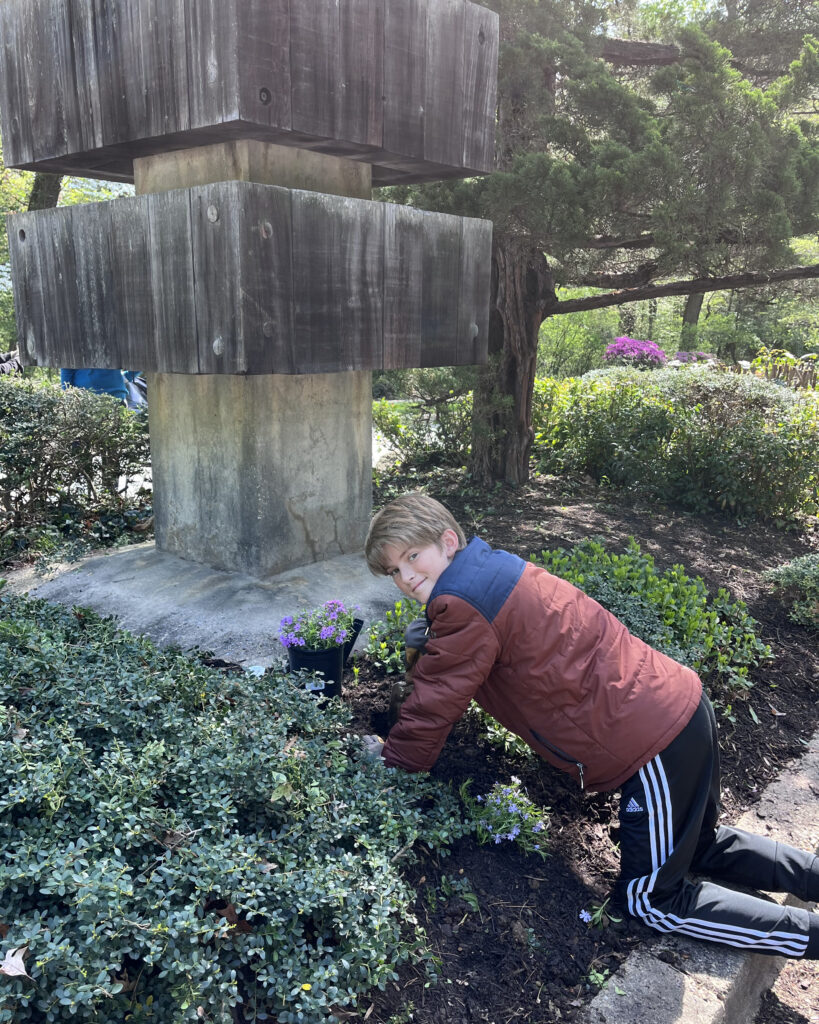
Tomas Crumley (12)
During this fun day working side by side, neighbors even exchanged stories about their trees! One very tall Norway pine got its start in the early ‘70s, after a homeowner stuck a Christmas tree plant into the ground. Another towering Willow Oak came up as a sapling in the mid ‘70s after its parent tree was crushed by a car.
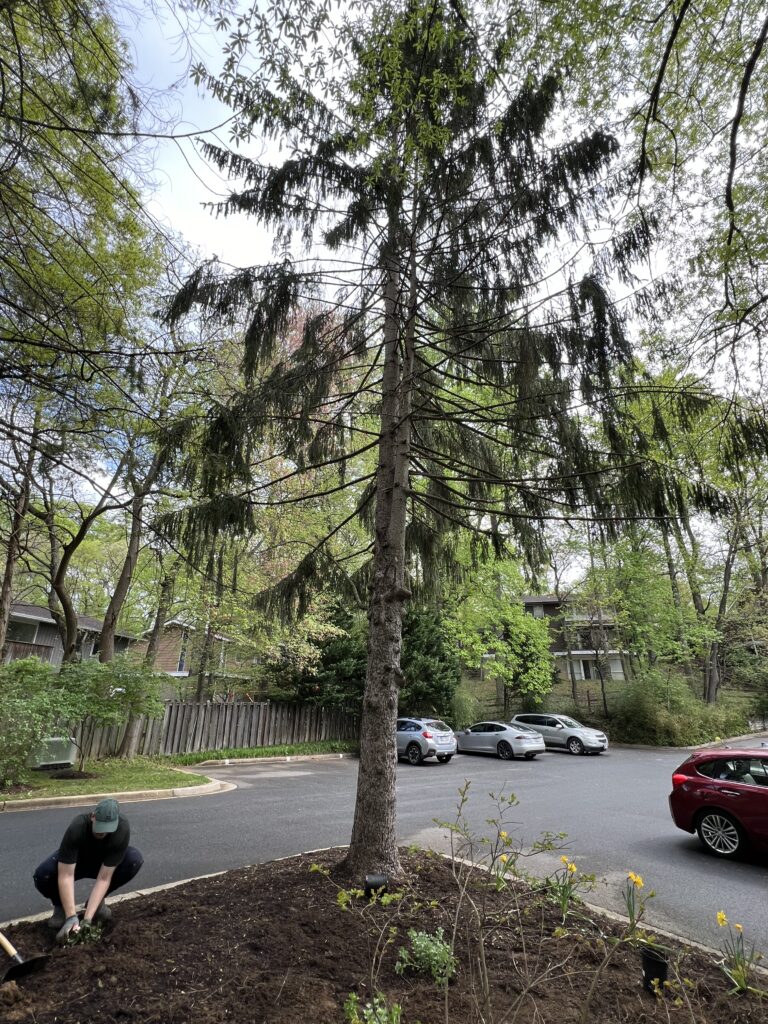
Norwood pine – 1970s Christmas tree!
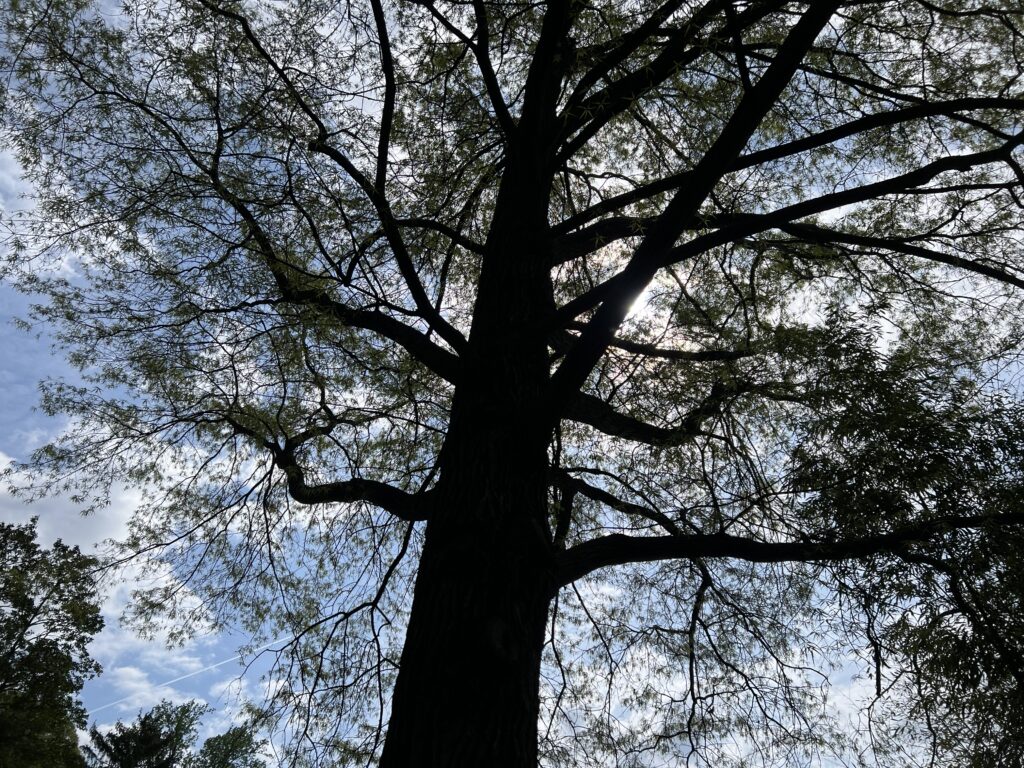
Willow oak, 1970s planting
“We also adopted a long-neglected circle in the 800 block of NME where we planted a variety of flowering perennials and sowed seeds for a pollinator garden,” said Saven.
The Landscaping committee is considering which circle to adopt next. Please send an email to landscaping@newmarkcommons.net if you would like to nominate a circle that needs some love and attention.
In addition to those named above, other volunteers included: Gabriela Zavala, Jennifer Jackson, Kim Cullen, Mats Olsen, Thomas and Rocio Crumley, Wini E. Herrmann, Amanda Mita, Eric Peich, Megan Hershey and year-old daughter Elena, Ron Tipton, Alan Tolerton, James Whalen, Sally Guardia, Nan Whalen, Jim Nations, Rhonda Gordon, Ardis Fisher, Maryanna Kieffer, Sandy Crowe, Yellow Wilkins, Emily Ecker, Josh Lubell, and Barbara Cano.
Photos by Rocio Crumley, Emily Ecker, Saven Wilkins, Pat Reber
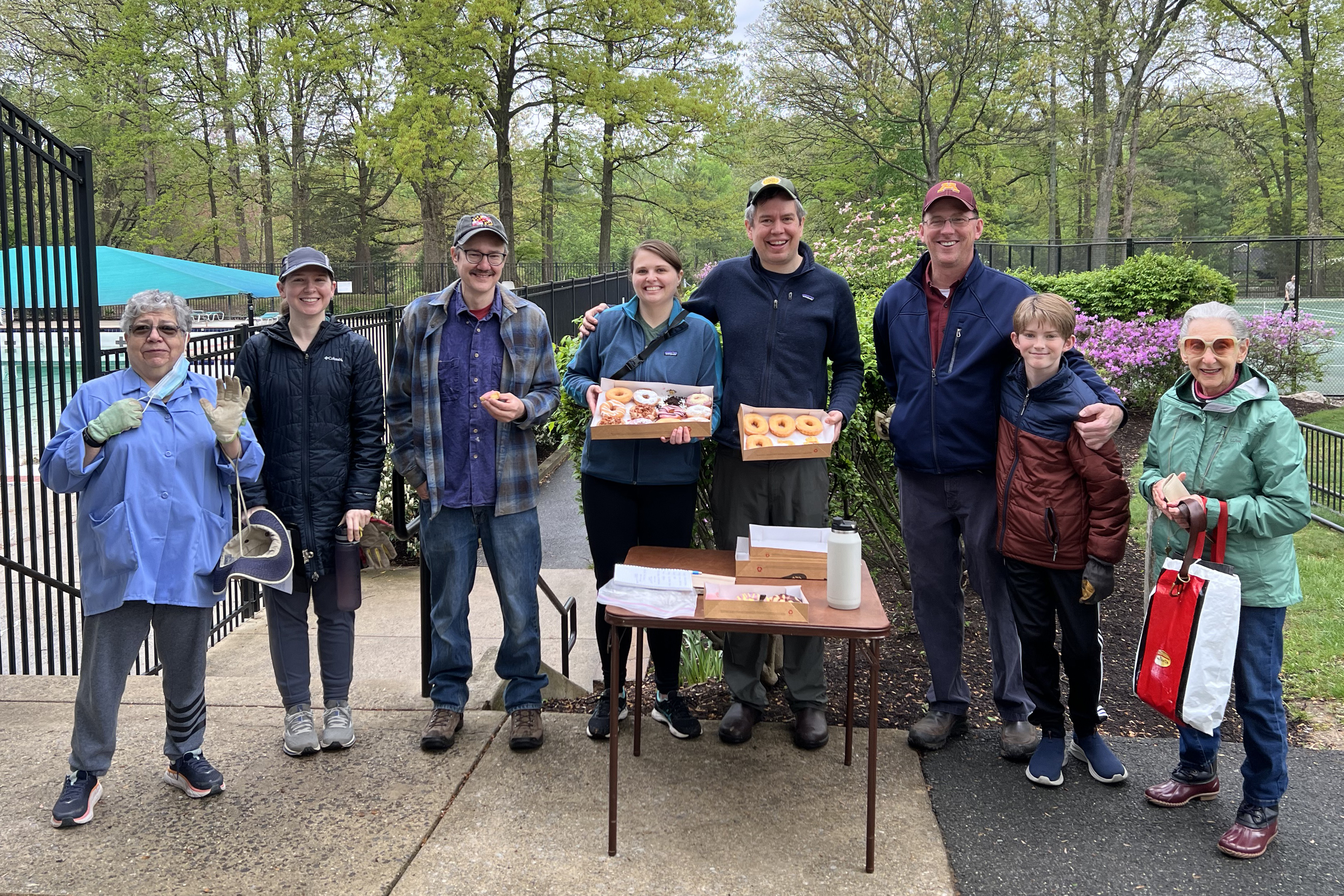
L-R: Gabriela Zavala, Jennifer Jackson, Saven Wilkins, Kim Cullen, Mats Olsen, Thomas Crumley and son Tomas, Wini E. Herrmann. Donuts at the starting gate!
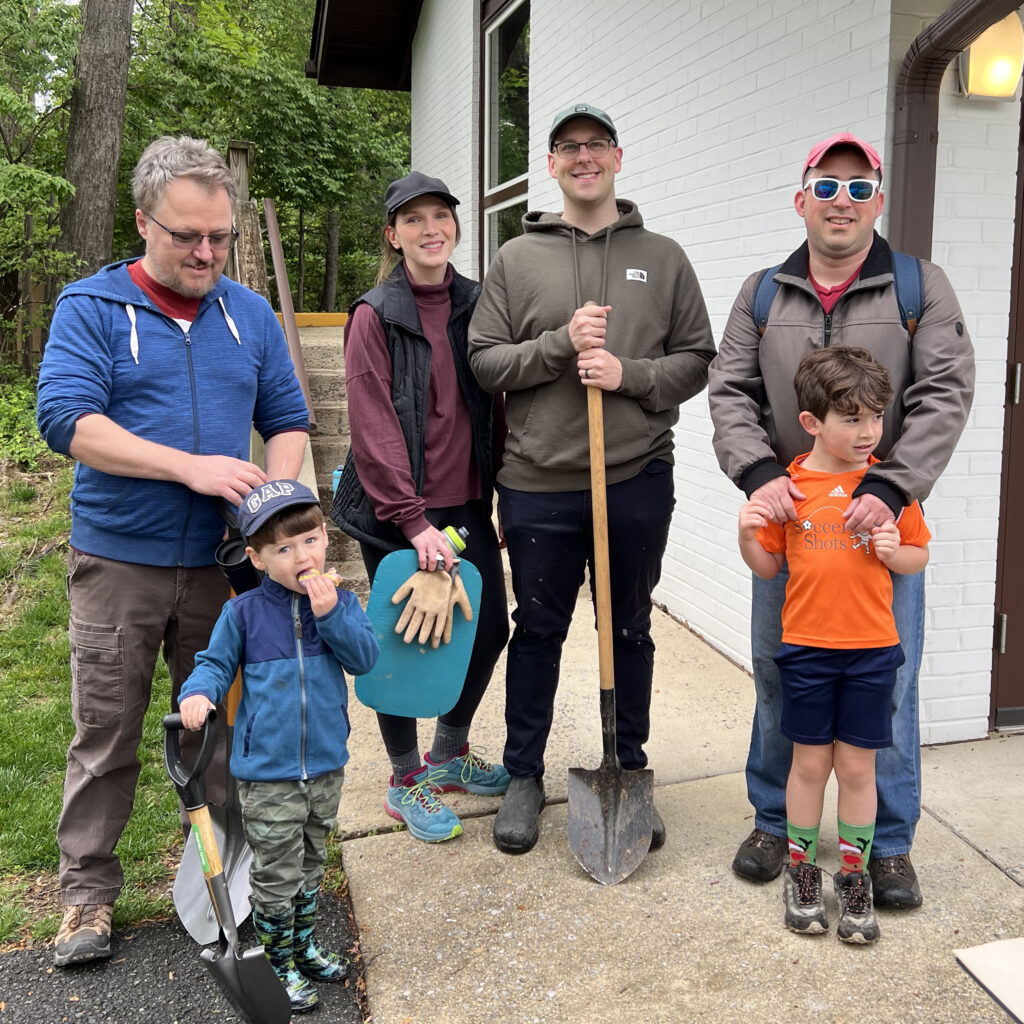
L-R: Chris Hershey and son Gavin,3; Amanda Mita, Eric Peich, Josh Silverstein and son Noah, age 8
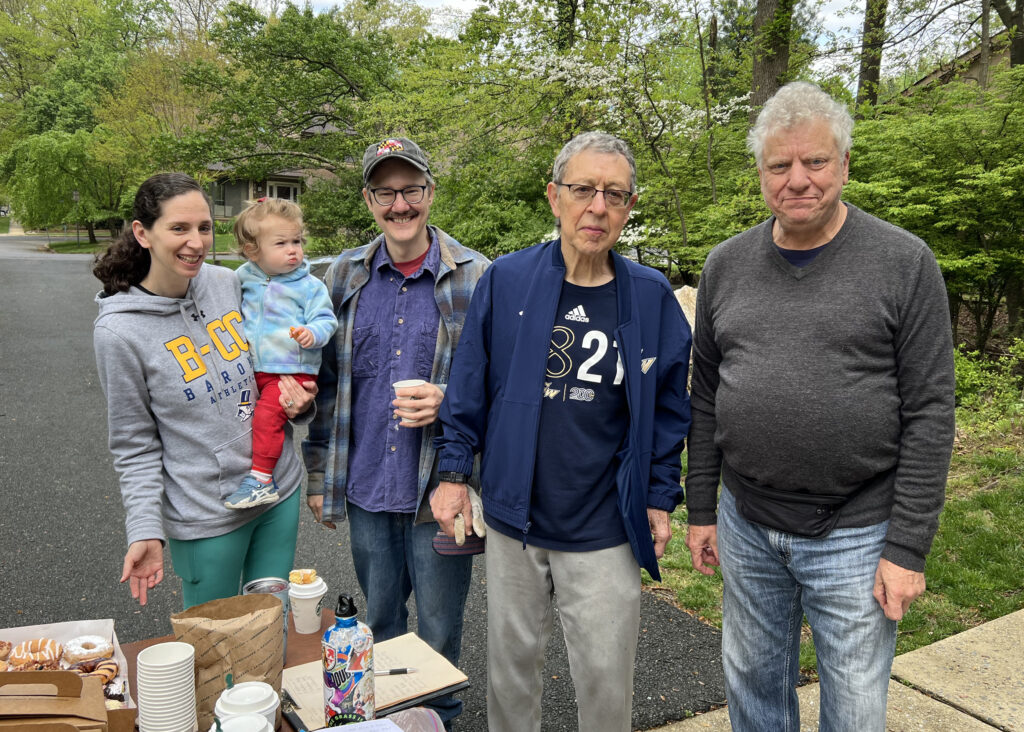
Megan Hershey and daughter Elena, Saven Wilkins, Ron Tipton, Alan Tolerton. Elena, now about a year old, last appeared as a three-month-old in a community news story on our website—dressed in stars and stripes for July 4 celebrations at the pool!
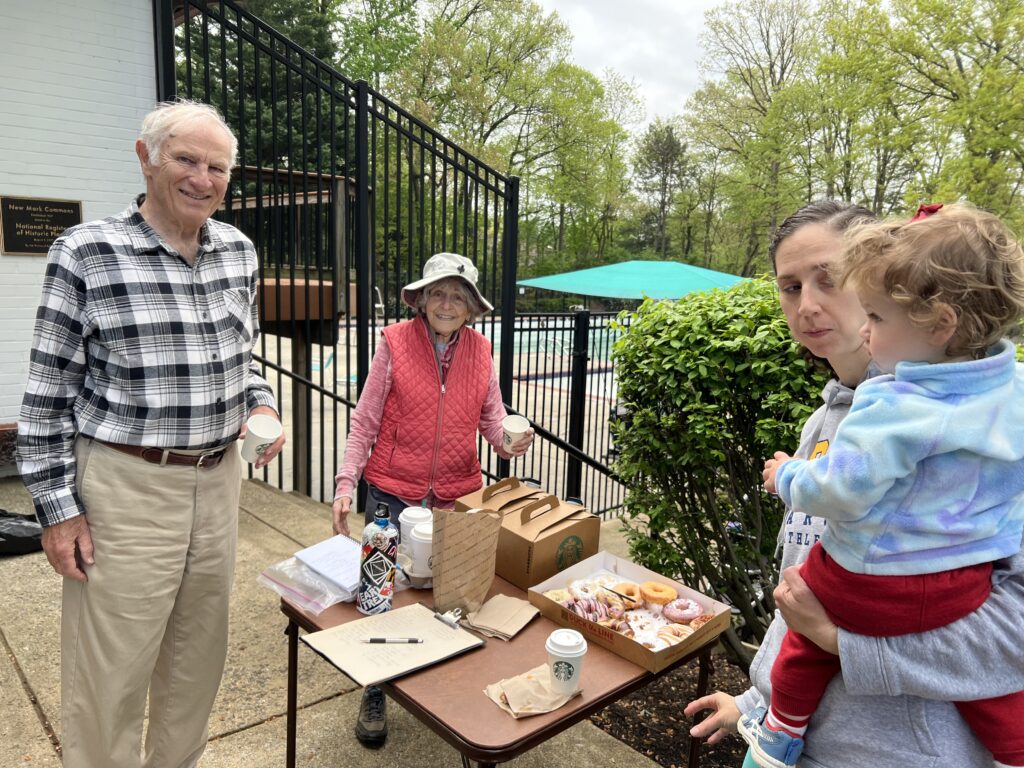
James Whalen, Sally Guardia, Megan and Elena Hershey
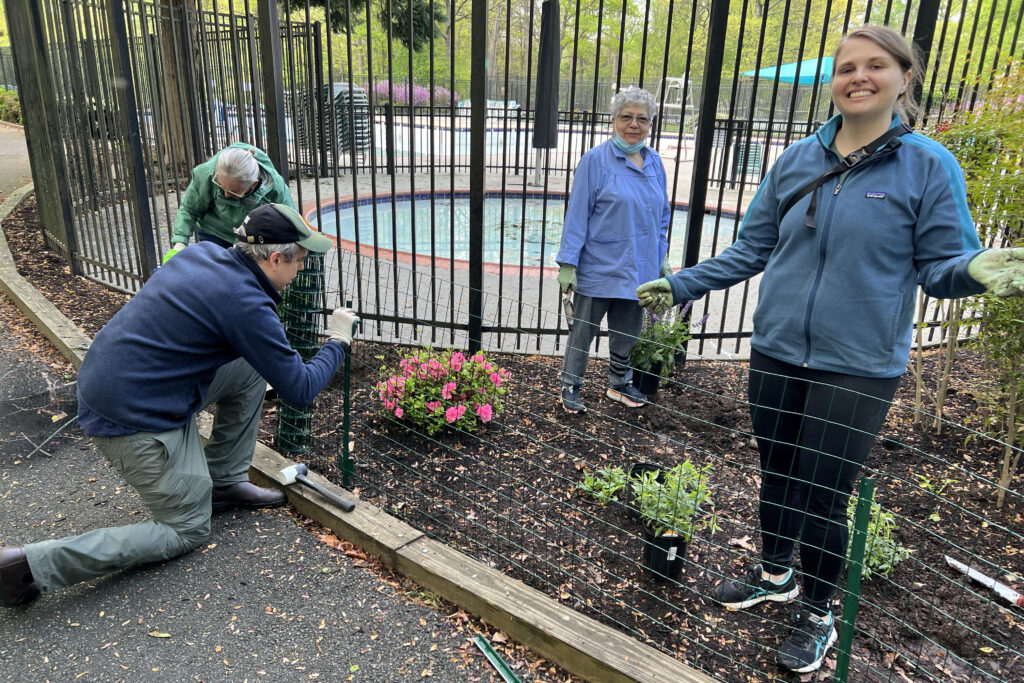
Mats Olsen and Wini Herrmann behind him, on the left; Gabriele Zavala and Kim Cullen on the right. After they planted, they erected a fence to protect the new growth.
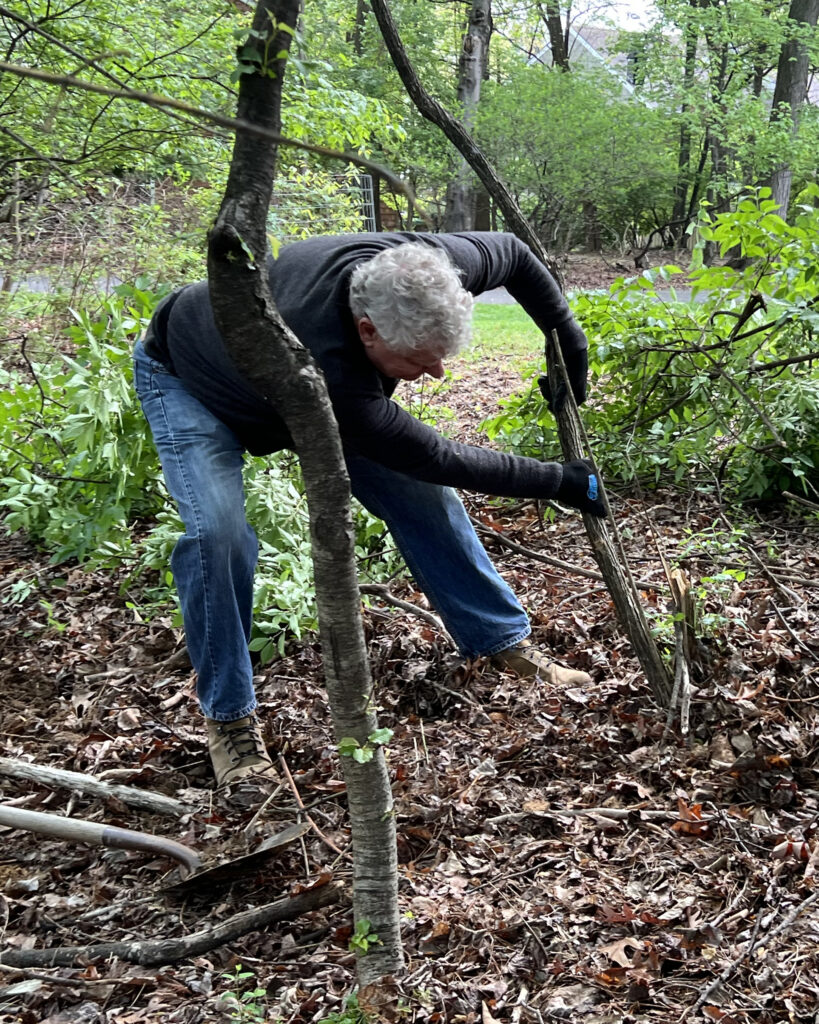
Alan Tolerton tackled dead brush behind Tegner homes.
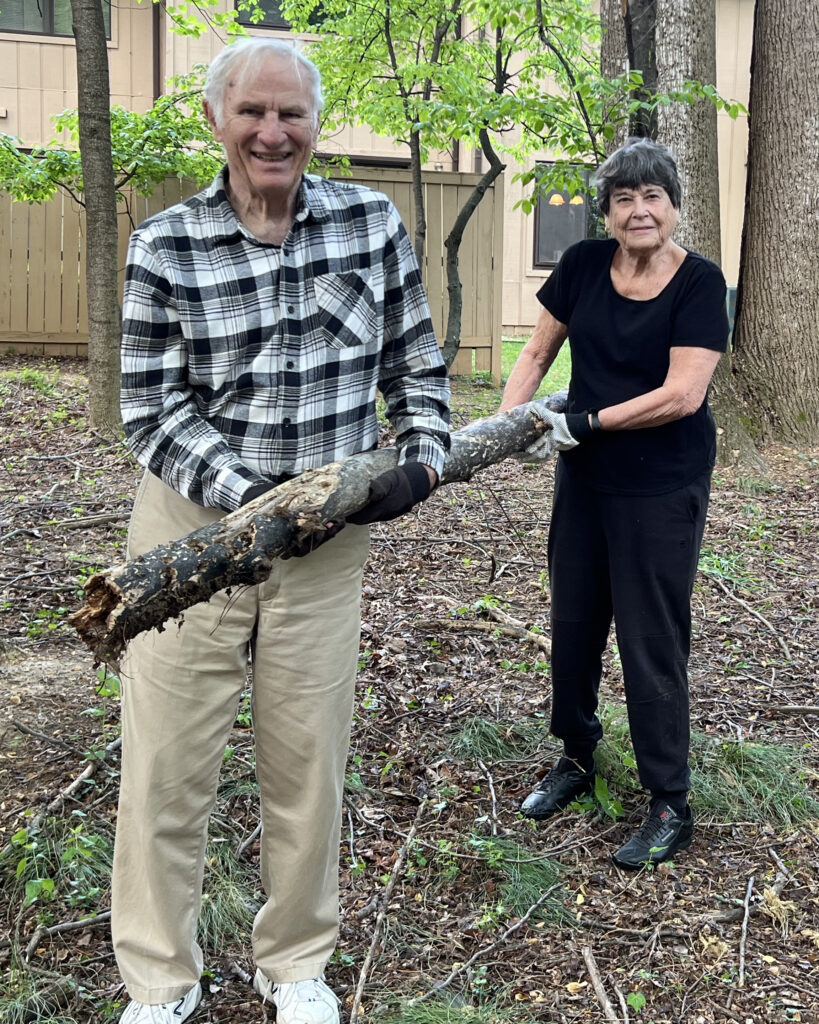
Nan and James Whalen worked behind the Tegner homes.
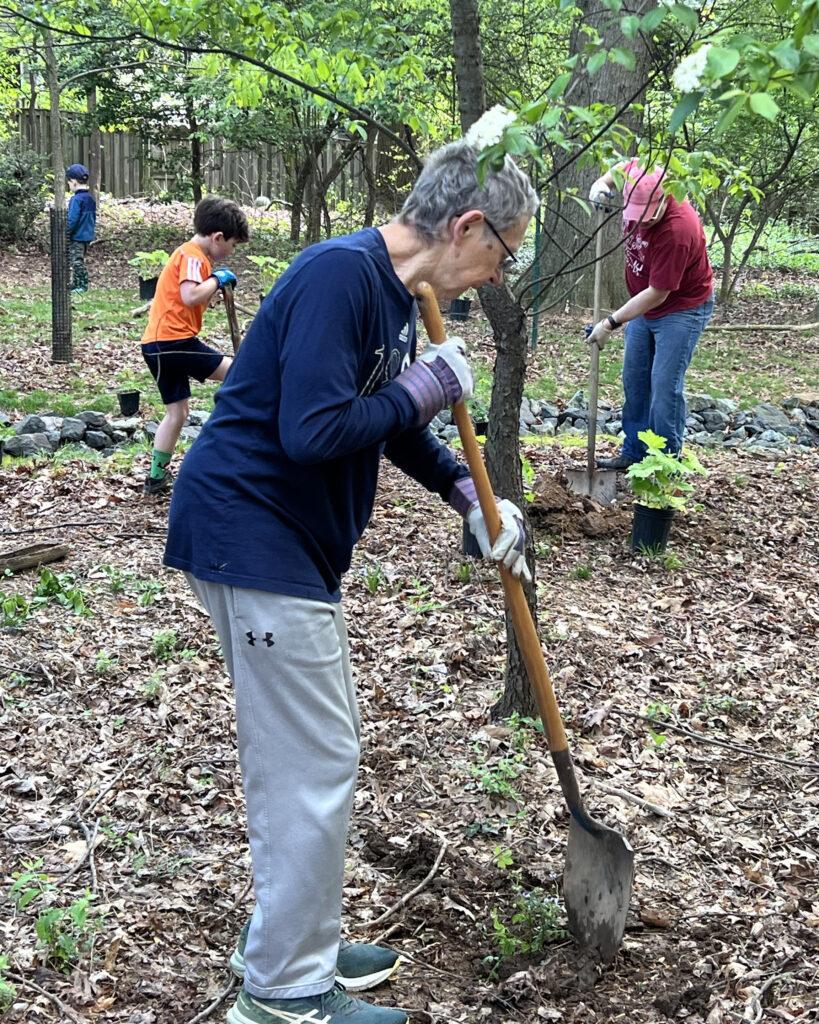
L-R: Noah Silverstein, age 8, Ron Tipton and Noah’s dad Josh dig into the ground, planting ostrich ferns and Hairy alum.
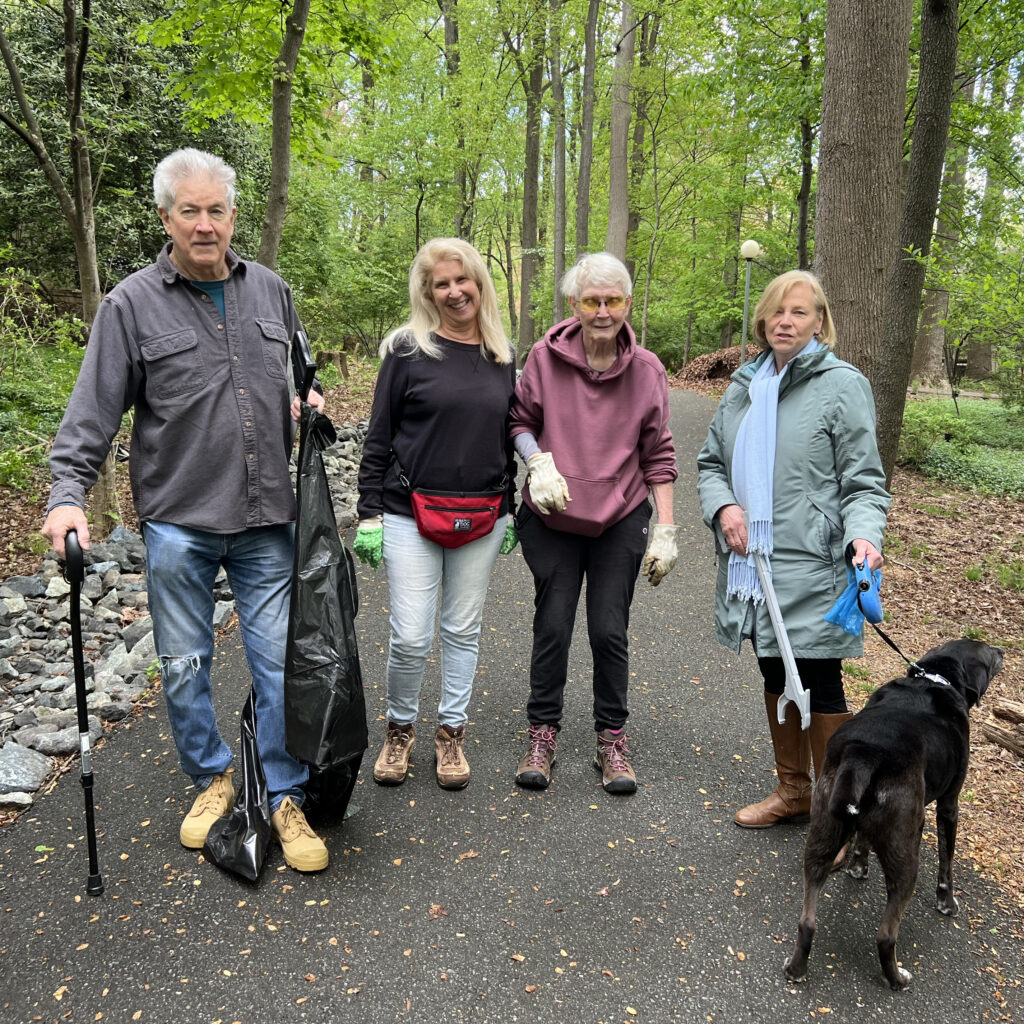
L-R: Jim Nations, Rhonda Gordon, Ardis Fisher and Maryanna Kieffer on the woodland path. Ardis had just finished pulling up weeds sprouting in the riprap behind the 400 NME block, and Rhonda purged deadwood off a slope behind it.
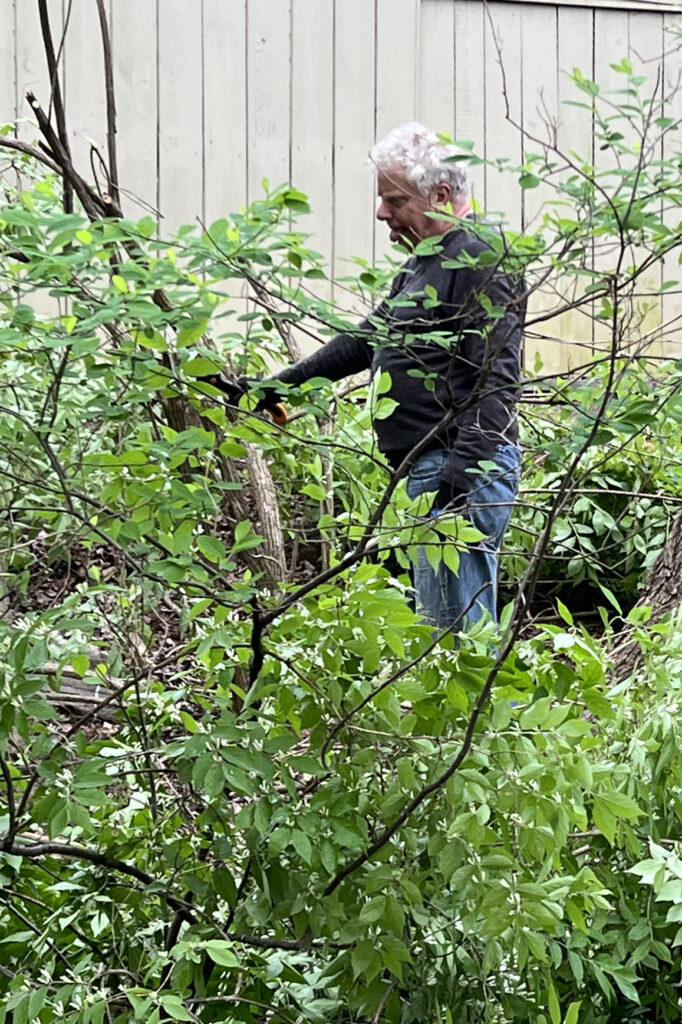
Photo Spring is a time to hack bath overgrowth. Alan Tolerton attacks a bush behind the Tegner homes.
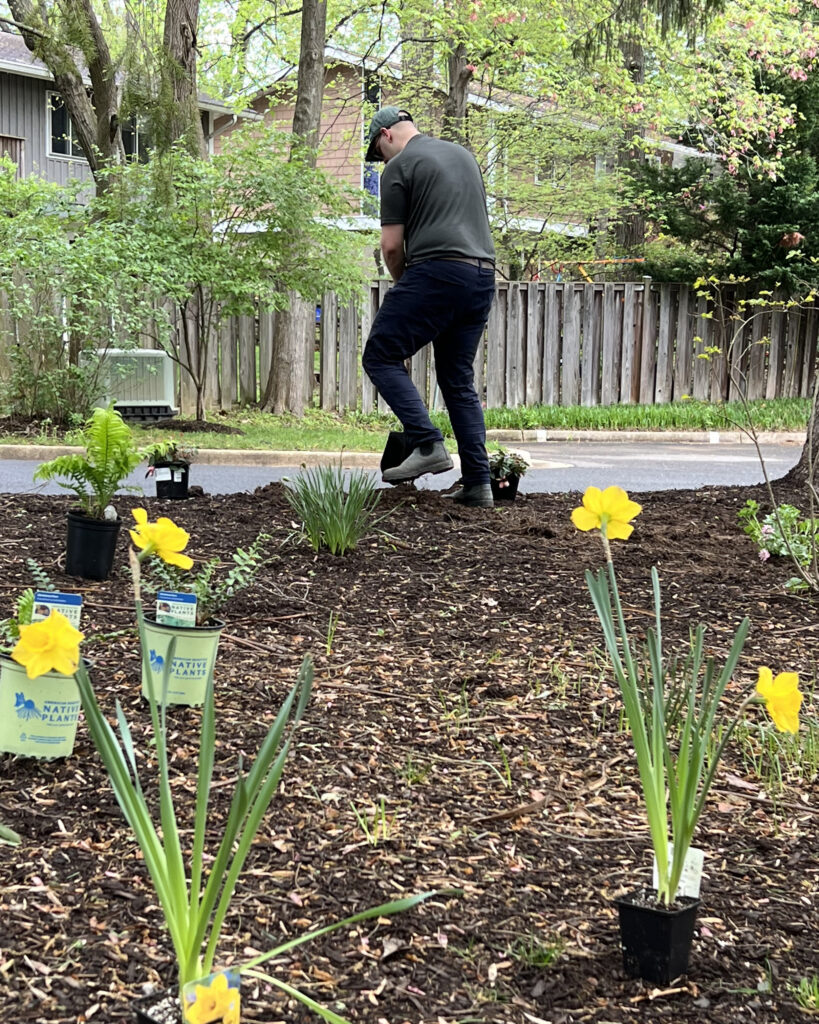
Erich Peich worked in the triangle at entrance to the 100 NME block.
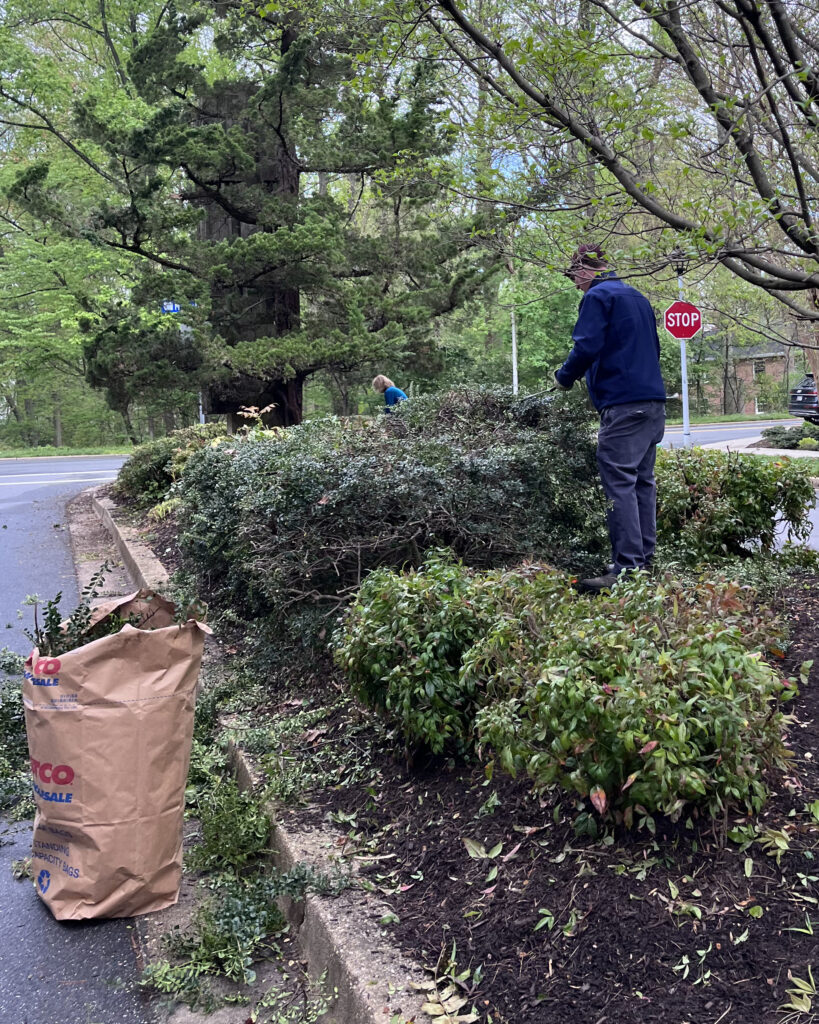
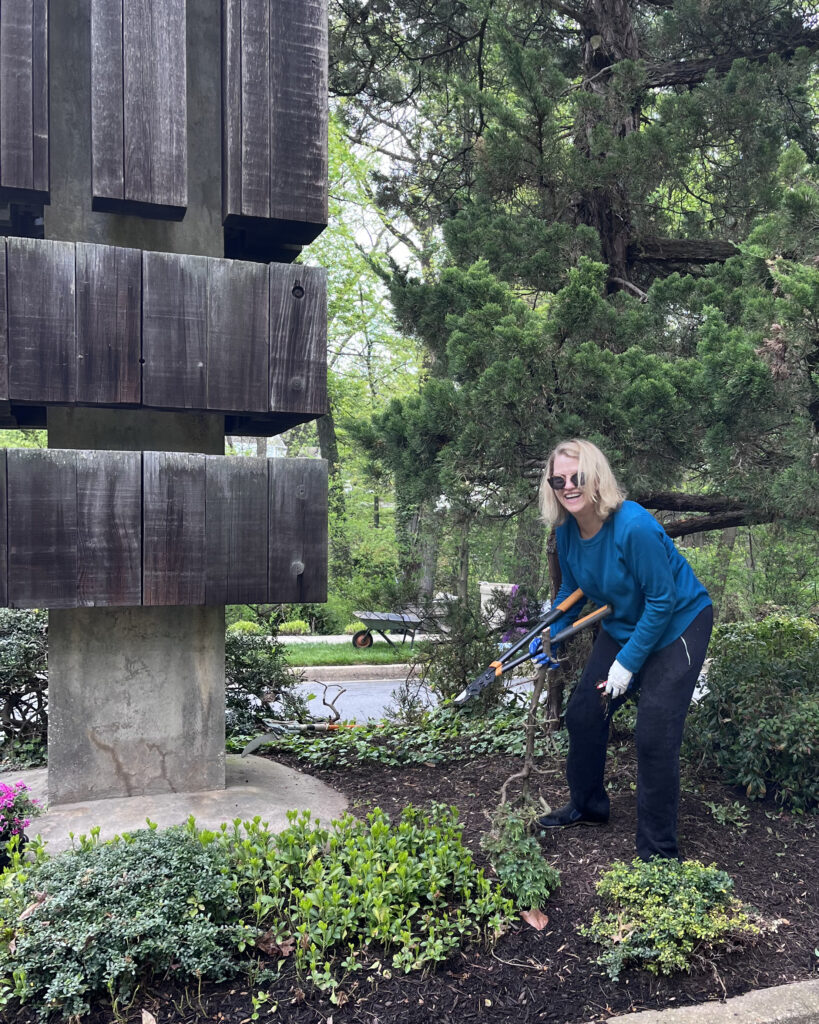
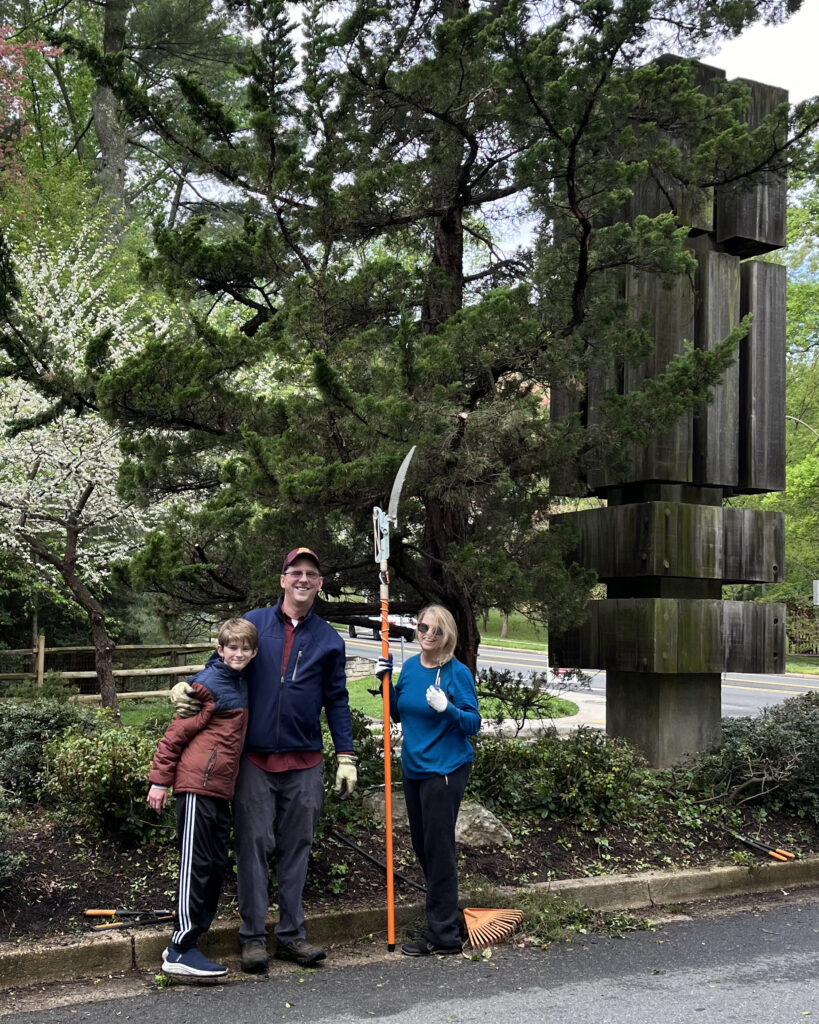
Totem pole island work: Thomas Crumley and his son Tomas joined Barbara Cano to trim back overgrowth on the island that is home to the NMC Totem.
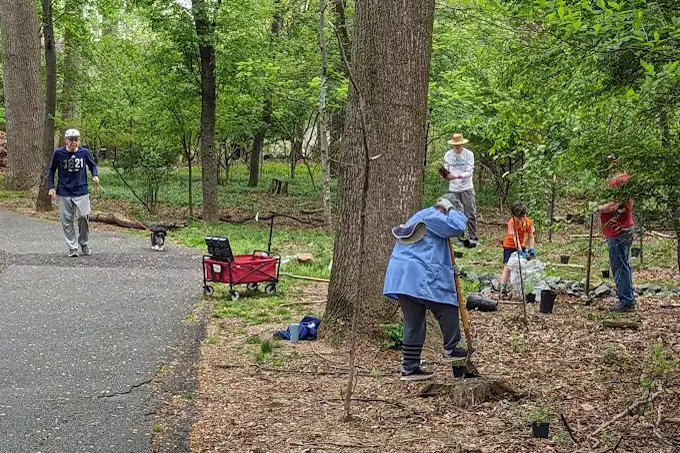
Along the woodland pathway, more planting going on.
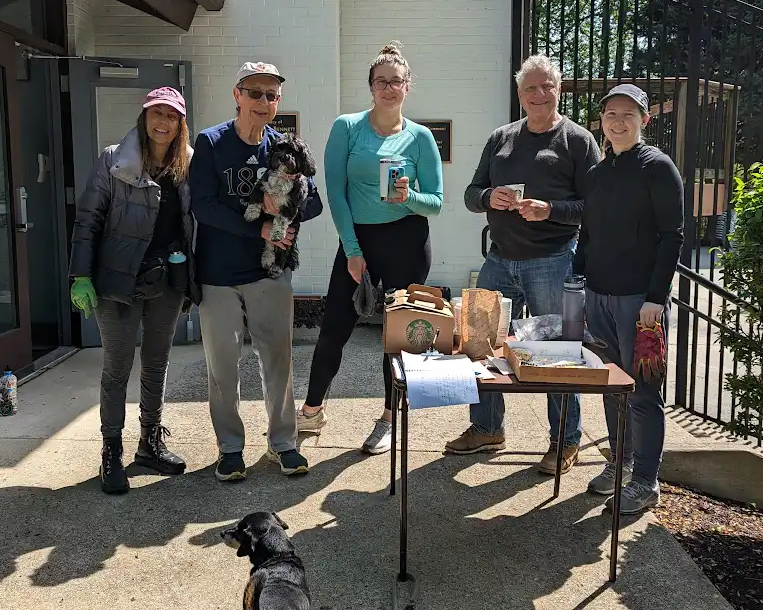
L-R: Sandy Crowe, Ron Tipton, Emily Ecker, Alan Tolerton, Jennifer Jackson.
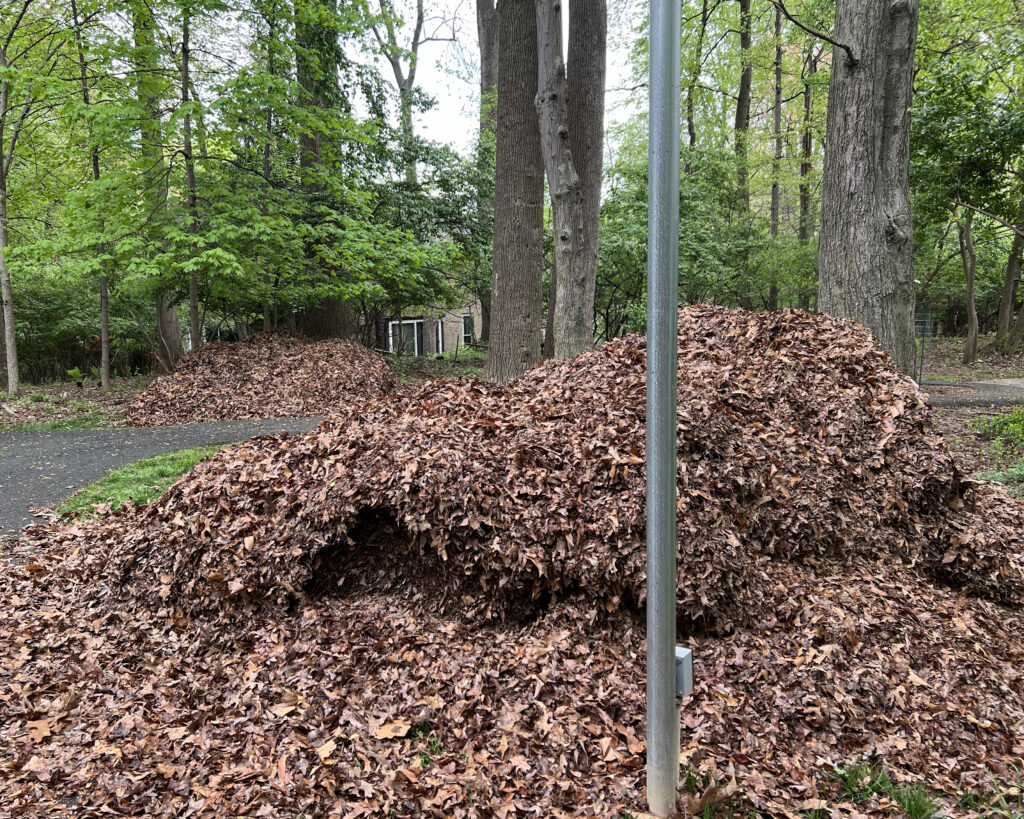
If you’re wondering why those huge piles of leaves suddenly appeared along the woodland path, here’s why: The Board in April agreed to remove the leaf detritus that had accumulated in the small grove of trees across from the deep end of the swimming pool. AW Landscapes scooped up those leaves and moved them to the wooded area, where they were to be spread out to kill off grass growth to allow for native plants to spread.
